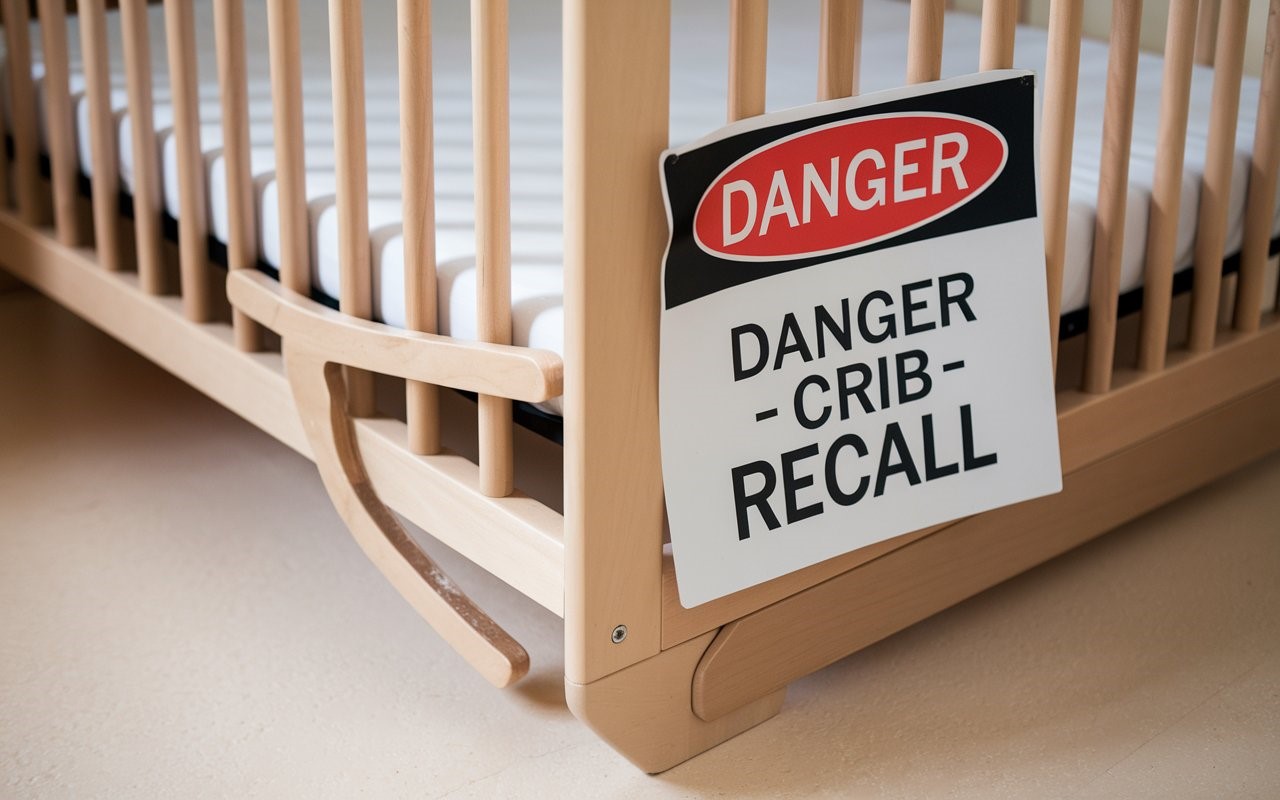Parents, ensuring your baby’s safety is non-negotiable, especially when it comes to essential products like cribs. Crib recall announcements serve as critical alerts to protect little ones from potential hazards. This comprehensive guide covers the latest crib recalls, signs of unsafe designs, and steps to ensure you only choose reliable and certified cribs. Let’s dive into the key details you need to safeguard your child’s sleeping space.
Understanding Crib Recall
What is a Crib Recall?
A crib recall occurs when manufacturers or safety organizations identify defects or hazards in cribs that can endanger a child’s safety. The recall might involve design flaws, manufacturing defects, or violations of safety standards. Companies issue public warnings and often offer repairs, replacements, or refunds.
Why Do Crib Recalls Happen?
Crib recalls are typically prompted by:
- Structural issues like broken slats or loose screws.
- Entrapment risks that can cause suffocation.
- Toxic materials such as harmful paints or finishes.
- Stability problems leading to tipping or collapse.
Recent Crib Recall Alerts
Stay vigilant by reviewing current recalls:
- A popular brand recently recalled 100,000 units due to weak side panels posing entrapment risks.
- Certain imported cribs were flagged for excessive lead levels in the paint.
Keep track of recalls by monitoring government websites like the U.S. Consumer Product Safety Commission (CPSC).
Recognizing Unsafe Cribs

Signs Your Crib Might Be Unsafe
- Wobbly construction: Indicates compromised stability.
- Gaps between slats: Can cause entrapment.
- Sharp edges or corners: Pose laceration risks.
- Non-compliant labeling: Missing safety certifications.
The Importance of Standards in Crib Safety
Modern cribs should comply with:
- ASTM International standards for strength and durability.
- JPMA certification verifying adherence to safety guidelines.
- Prohibition of drop-side cribs under current U.S. regulations.
Steps to Respond to a Crib Recall
What to Do if Your Crib is Recalled
- Stop using the crib immediately.
- Check the recall notice: Follow instructions provided by the manufacturer.
- Contact the company: Request a repair kit, replacement, or refund.
- Dispose responsibly: Ensure the recalled crib doesn’t end up with another family.
How to Stay Updated on Crib Recalls
- Subscribe to CPSC alerts for timely updates.
- Follow credible parenting blogs and safety forums.
- Register your crib with the manufacturer for automatic notifications.
Safe Alternatives and Tips
How to Choose a Safe Crib
When purchasing a crib, prioritize:
- Solid construction without loose parts.
- Certified non-toxic materials.
- A mattress that fits snugly without gaps.
- Compliance with the latest safety standards.
Maintaining Crib Safety Over Time
- Regularly inspect the crib for signs of wear.
- Avoid hanging heavy objects above the crib.
- Use approved crib sheets and avoid thick bedding.
Crib Recall: Why It Matters
Crib recalls highlight the evolving nature of safety standards and the importance of consumer vigilance. They serve as reminders that even well-known brands can face issues. By staying informed, parents can ensure their children enjoy a safe sleeping environment.
FAQs
What should I do if I own a recalled crib?
Stop using it immediately, follow the manufacturer’s recall instructions, and seek a repair kit, replacement, or refund.
How can I check if my crib has been recalled?
Visit the U.S. Consumer Product Safety Commission website or search for the model number in recall databases.
Are secondhand cribs safe to use?
Only if they meet current safety standards and have no recall history. Always inspect for defects before use.
Why are drop-side cribs banned?
Drop-side cribs were banned due to numerous incidents of entrapment and suffocation linked to their design flaws.
How often should I inspect my crib for safety?
Inspect monthly or whenever you adjust or move the crib. Look for loose screws, cracks, or unstable parts.
What features make a crib safe?
A sturdy frame, slats no wider than 2 3/8 inches apart, non-toxic materials, and compliance with safety certifications.
Conclusion
Crib recall awareness is crucial for every parent. By staying informed, registering products, and following safety practices, you can create a secure environment for your baby. Don’t compromise when it comes to your child’s wellbeing—safe cribs are worth every effort.









